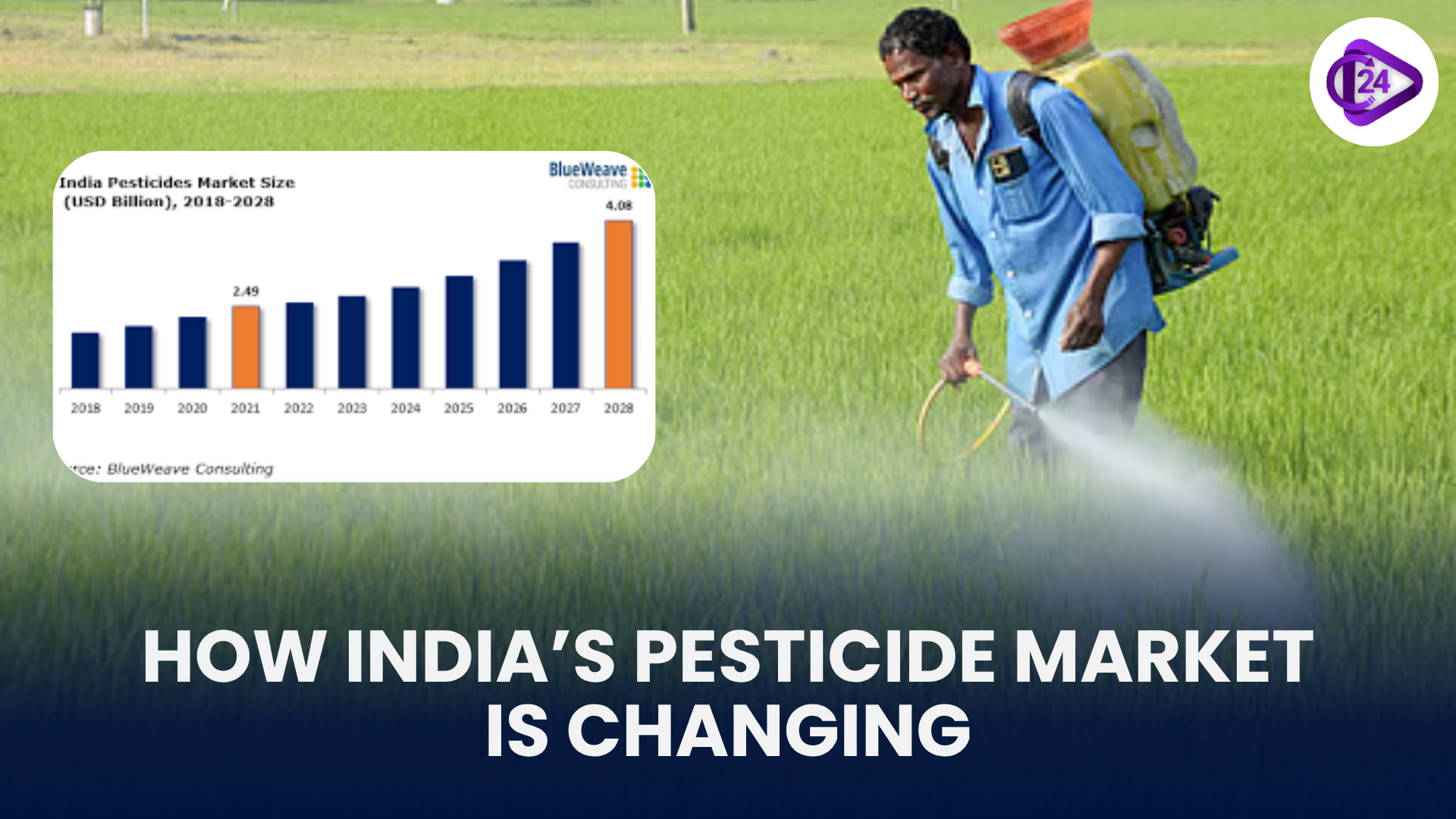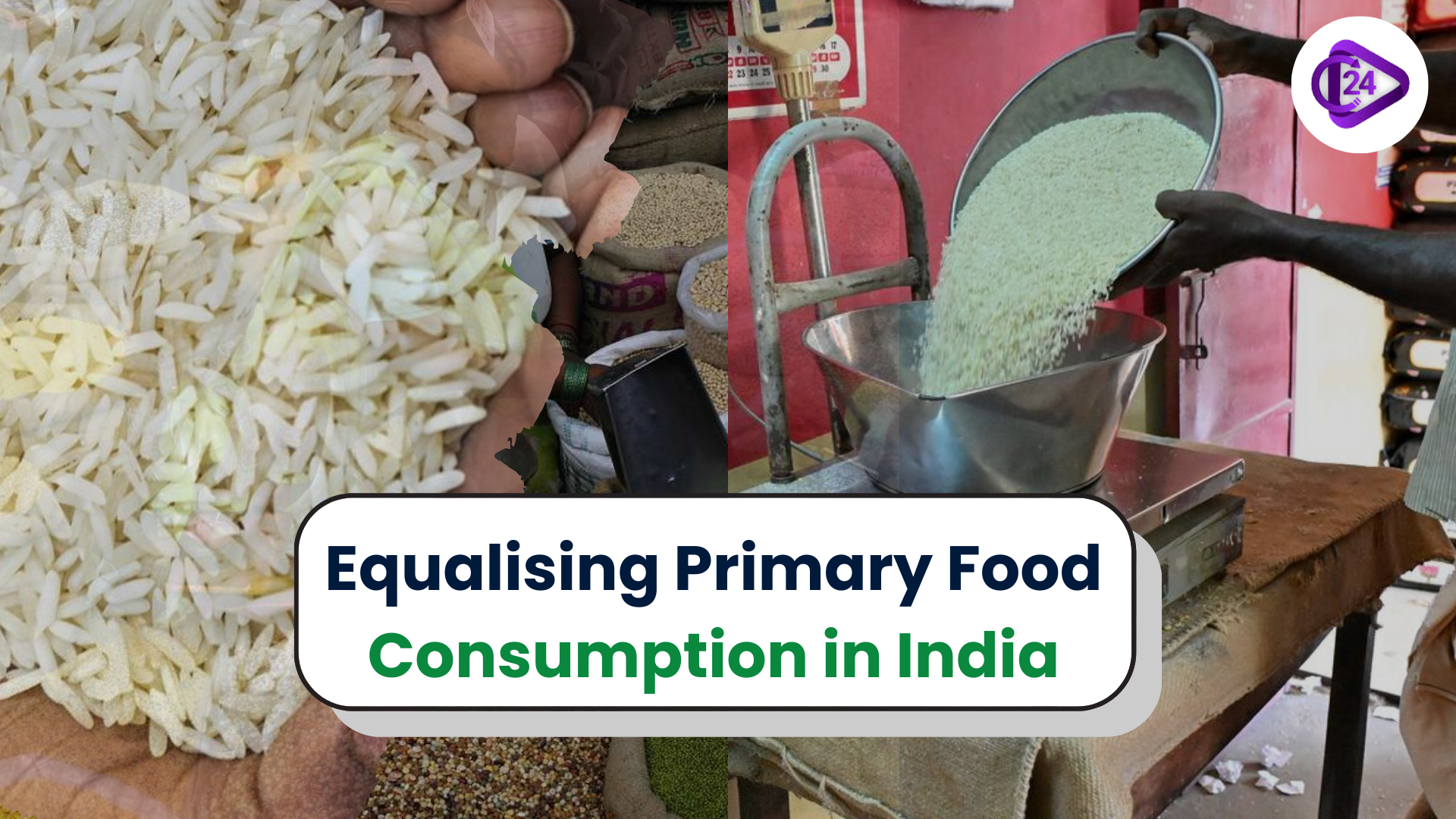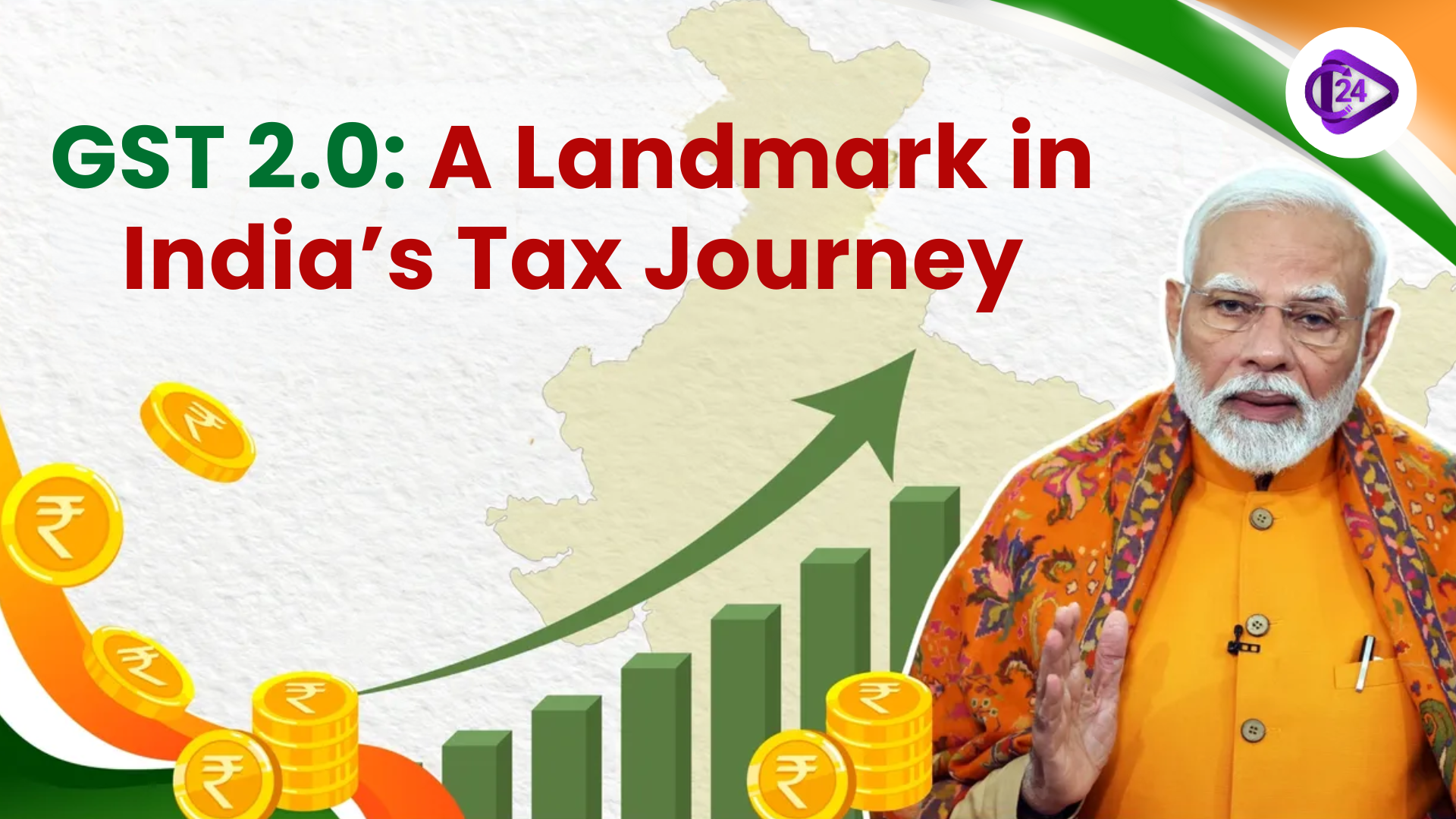
There is going to be a significant transformation in the crop protection chemicals market in India; the shift is towards herbicides as opposed to insecticides and fungicides due to labour shortage in the agricultural sector and increased mechanisation in weed control. The herbicide market is performing better at the rate of more than 10 percent per year compared to the rest of the pesticides.
What are Crop Protection Chemicals?
Pesticides are also known commonly as crop protection chemicals and include:
-
Insecticides -kill insects that destroy a crop (e.g. plant hoppers in rice).
-
Fungicides - used to suppress fungal diseases (e.g. sheath blight in rice).
-
Herbicides - Kill or suppress weeds that can rival crops in the available resources.
India’s Market Overview (2024–25)
|
Segment |
Market Size (₹ Crore) |
Growth Trend |
|
Insecticides |
₹10,700 |
Stable |
|
Herbicides |
₹8,200 |
Fastest growing (>10%) |
|
Fungicides |
₹5,600 |
Moderate |
-
Total Market: ₹24,500 crore (organised domestic market)
Why Herbicides Are Growing Fastest
-
Shortage of Labour
-
Manual weed control is tedious, time consuming (8-10hours /acre) and monotonous.
-
The daily wages of the farm workers increased to 447 (2024) against 326 (2019).
-
The availability is being further worsened by the rural youth migrating out of agriculture.
-
Herbicides cut down on the limitation of manual labour.
-
-
Mechanisation Limitations
-
Power weeders take less time, though they do not access tightly-seeded locations or deep seeded weeds.
-
In this situation, herbicides are used as a source of weed control.
-
-
Economic Efficiency
-
A ₹850–900 herbicide dose covers an acre — cheaper than ₹2,000+ manual weeding.
-
Efficient and harvest preservative.
-
Types of Herbicide Applications
|
Type |
Timing of Use |
Trend |
|
Pre-emergent |
Before weeds emerge |
Rapid growth |
|
Early Post-emergent |
After weeds emerge but early stage |
Growing |
|
Post-emergent |
Once weeds are visible |
Traditional method |
-
Farmers increasingly use preventive sprays (pre- & early post-emergent) to ensure early weed control and labour savings.
Market Players: MNC Dominance vs Indian Breakthroughs
Multinational Companies (MNCs)
|
Company |
Market Share (%) |
Country |
|
Bayer AG |
15% |
Germany |
|
Syngenta |
12% |
China-owned (Swiss HQ) |
|
ADAMA |
10% |
China-owned (Israel HQ) |
|
Corteva |
7% |
USA |
|
Sumitomo |
6% |
Japan |
Indian Players
-
Crystal Crop Protection Ltd (CCPL) 4%
-
Bought gramoxone synths, ethoxysulfuron, by Syngenta and Bayer respectively.
-
Invented Sikosa new paddy herbicide (Battelle USA & Mitsui Japan).
-
Dhanuka Agritech -6%
-
Strategic acquisitions and innovation are ways in which the Indian firms are competing in herbicides.
Monopoly and Strategy
-
Unlike seeds and fertilisers, the pesticide industry does not experience dominance in the hands of the government.
-
MNCs continue to control most of the active ingredients & patented formulations.
-
The Indian firms are trying to become self-reliant in the following manner:
-
Licensing deals
-
R&D alliances at home Joint international ventures Joint international ventures.
-
Indigenous preparations (e.g. Sikosa)
Conclusion
There is a structural shift in India in terms of the pesticide market. Herbicides have proved to be a labour saving alternative to manual weeding- similar to the case of tractors replacing bullocks.



 India and Australia Sign Mutual Recognition Arrangement (MRA) for Organic Products
India and Australia Sign Mutual Recognition Arrangement (MRA) for Organic Products Cabinet Approves Rs. 69,725 Crore Package for India’s Maritime Growth
Cabinet Approves Rs. 69,725 Crore Package for India’s Maritime Growth Satellite Internet in India 2025: Bridging the Digital Divide
Satellite Internet in India 2025: Bridging the Digital Divide Equalising Primary Food Consumption in India: PDS & Nutrition Gaps
Equalising Primary Food Consumption in India: PDS & Nutrition Gaps Humanities as a Cornerstone of Ethical Progress in a Market-Driven World
Humanities as a Cornerstone of Ethical Progress in a Market-Driven World Unemployment Rate Declines, But Female Youth Face Rising Joblessness: PLFS Data
Unemployment Rate Declines, But Female Youth Face Rising Joblessness: PLFS Data PM Inaugurates India’s First Bamboo-Based Ethanol Plant in Assam
PM Inaugurates India’s First Bamboo-Based Ethanol Plant in Assam India Set to Be Among Top Five Shipbuilding Nations by 2047
India Set to Be Among Top Five Shipbuilding Nations by 2047 GST 2.0: A Landmark in India’s Tax Journey
GST 2.0: A Landmark in India’s Tax Journey APEDA launches BHARATI initiative to boost agri-food exports
APEDA launches BHARATI initiative to boost agri-food exports






